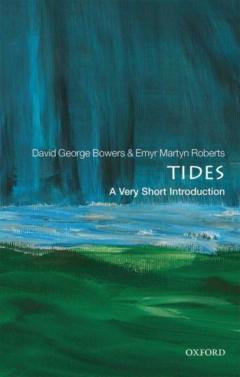The tide is the greatest synchronised movement of matter on our planet. Every drop of seawater takes part in tidal motion, driven by the gravitational pull of the moon and sun. At the coast, we see the tide as a twice-daily rise and fall of sea level that moves the edge of the sea up and down a beach or cliff-face. In some places, the tide is small but at others it can rise in a few hours by the height of a three storey building; it then has to be treated with great respect by those who live and work by the sea.
In this Very Short Introduction David George Bowers and Emyr Martyn Roberts explore what we know about the tides. Blending clear explanations of well known tidal phenomena with recent insights in the deep ocean and coastal seas, Bowers and Roberts use examples from around the world, to tell the story of the tide, considering its nature and causes, its observation and prediction, and unusual tides and their relevance. They explore why tides have attracted the attention of some of the world's greatest scientists, from the initial challenge of explaining why there are two tides a day when the moon and sun pass overhead just once; a problem that was solved by Isaac Newton. In the 19th century, scientists unravelled the rhythms of the tide; good tidal predictions in the form of tide tables were then possible. The predictions were made on beautiful tide predicting machines constructed of brass and mahogany, some of which can still be seen in maritime museums. In the 20th century, the importance of tides as mixers of sea water became evident. As Bowers and Roberts explore, tidal mixing of the ocean is essential for maintaining its deep circulation, a key part of the climate-control system of our planet. In inshore waters, tidal mixing enhances biological productivity, influences sea temperature and turbidity and creates dramatic features such as maelstroms and tidal bores. In the 21st century, space probes are examining the effects of tidal processes on the moons of Jupiter and Saturn and the possibility of tidally-heated liquid oceans with their own ecosystems. Looking to the cutting edge of tidal research, Bowers and Roberts also consider how we can study the role of the tide in the geological and biological evolution of our own planet with innovative computer models.
Categories:
Language:
Engleza
Publishing Date:
2019
Publisher:
Cover Type:
Paperback
Page Count:
144
Collection:
ISBN:
9780198826637
Dimensions: l: 11.1cm | H: 17.4cm | 150g
7800
Supplier stock
Delivery in 2 to 3 weeks!
Price applicable only to online purchases!
Free Gift Wrapping!
Free shipping over 150 RON
You can return it in 14 days
You got questions? Contact Us!

